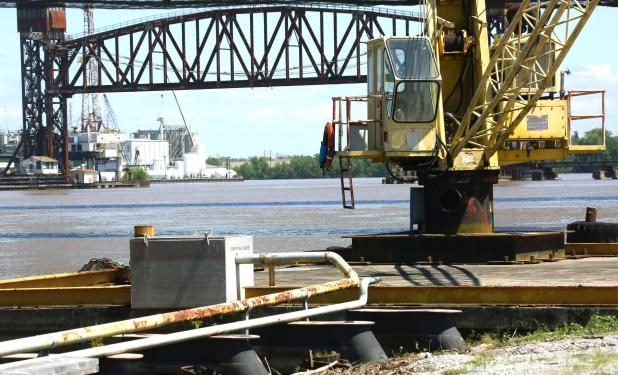
From the Editor: What might be coming down the river
President Coolidge came down in a railroad train
With a little fat man with a notepad in his hand.
President say, “Little fat man, isn’t it a shame
What the river has done to this poor cracker’s land?”
— “Louisiana 1927,” Randy Newman
Did anyone else think of Randy Newman’s “Louisiana 1927” last week?
The song by Newman, who grew up in Louisiana, is about the great flood of 1927. Land in St. Bernard and Plaquemine parishes was intentionally flooded to relieve massive flooding in New Orleans.
In the verse quoted above, the little fat man is the pre-presidential Herbert Hoover, the man in charge of disaster response.
The irony is that despite President Coolidge’s claim, it wasn’t really the river that flooded out the farmer.
The song came to mind after reading about the meeting of the Atchafalaya River Basin Restoration & Enhancement Task Force at Morgan City’s Governmental & Emergency Operations Center. Like the people in Newman’s song, the task force is dealing with the balance between the sometimes competing needs for flood protection in rural and metro areas.
The situation isn’t as dramatic as it was in 1927. Not yet, anyway.
The meeting centered on the fallout from the serious floods that have made their way to us in the last decade.
We all know about the basic scenario here. The Old River structure at Simmesport sends 30% of the water coming down from the Mississippi and Red rivers into the Atchafalaya. The rest goes down the Mississippi River. Those proportions are mandated by congressional decree.
When the rivers are up, one of the ways to fight flooding is to open some of the gates in the Bonnet Carré Spillway west of New Orleans. That sends water into Lake Pontchartrain and down to the Mississippi Sound.
The Bonnet Carré has been opened 15 times since 1937. Six of those openings have happened since 2011.
People in Mississippi are getting angry about the damage to homes, businesses, the environment, shrimp fishing and oyster beds caused by the influx of fresh water. They’re starting to demand that the Morganza Spillway, where open gates could have a huge impact in the Morgan City area, be opened as an alternative when floods threaten.
Officials in Mississippi have gone to federal court to make their case.
The U.S. Army Corps of Engineers has, at least a couple of times over the last decade, expressed reluctance to open the Morganza because of the damage it would do in the Morgan City area.
As Hurricane Barry approached in 2019, for example, the New Orleans Advocate quoted Corps Deputy District Engineer Mark Wingate this way: “Literally, physically, it can be done. We all know that. But we also know the Atchafalaya River Basin is already in flood, and Morgan City is also in flood.
“Do we want to take more water into Morgan City? Into the Atchafalaya Basin and put them more at greater risk just to benefit someone downstream on the Mississippi River just because a storm might come into that area?”
That line of reasoning is going to make no sense to those people in Mississippi.
The task force that met in Morgan City, which is due to release a report in September, is trying to come up with some way to solve the problems in Mississippi without creating havoc in the Tri-City area.
Havoc isn’t out of the question, even in the absence of flooding.
Port of Morgan City Executive Director Raymond “Mac” Wade believes the Mississippi interests would like to a see half the Mississippi-Red water diverted into the Basin rather than the current 30%.
If you live or work in Morgan City, Berwick, Patterson, Amelia or Stephensville, it’s natural — and gloomy — to think about the worst case: What happens if the choice is between allowing Baton Rouge and New Orleans to be flooded and dumping a lot of water on Berwick and Morgan City?
But we always imagine that such a decision would have to be made because of an Old Testament-style disaster. Doing it as a response to elbow-throwing by one regional or economic interest against another, just as a matter of policy, could be an unnatural disaster.
Forget for a second what that extra 20% would mean for the worst-case calculations for flooding in Berwick and Morgan City. It could make everyday life tougher.
The Port of Morgan City could contribute more to the local economy if the sediment that already comes down the Atchafalaya from up north could be kept out of important channels. For the last couple of years that I’ve attended port board meetings, the goals always seem just out of reach.
A 50-50 split isn’t going to make the job easier.
Another gloomy thought from Newman’s song comes to mind: “They’re trying to wash us away.”
Bill Decker is managing editor of The Daily Review.
